Here’s a list of games I’ve Com-PETE-d in the above-mentioned calendar year.
So – what constitutes “Com-PETE-ion”? All Achievements/Trophies, where available, is a bare minimum; the aim is to fully experience what the game has to offer (from at least an asset perspective). DLC is required in almost all cases – the commitment is to the game as a whole.
Last year was a banger of a year: despite a bunch of 3DS/Wii U eShop purchases, I managed to decrease the length of The List by about ten, pushing the average age of my backlog three months younger (and the median age one month younger). And I had a lot of fun! But that fun should come to an end – it might be time for me to re-enter the workforce, decreasing the gaming time somewhat in the future.
So this year’s goals are a little less lofty. As per usual, I’m hoping to push the average age of The List forward, and continue to be a little more circumspect with my purchases.
- Zero Escape: Zero Time Dilemma (3DS)
- The 25th Ward: The Silver Case (PC)
- Lugaru HD (PC)
- Luftrausers (PC)
- Dreamfall: The Longest Journey (PC)
- Kena: Bridge of Spirits (Playstation 4)
- Kena: Bridge of Spirits (Playstation 5)
- Bridge Constructor Portal (PC)
- JETT: The Far Shore + Given Time (Playstation 5)
- Deliver Us The Moon (PC)
- Lego Star Wars: The Skywalker Saga Galactic Edition (Xbox One)
- Pupperazzi (PC)
- Quadrilateral Cowboy (PC)
- Thumper (PC)
- Tchia (Playstation 5)
- Thumper (Switch)
- A Little To The Left (Switch)
- Citizen Sleeper (PC)
- Thumper (Playstation 4)
- Thumper (Playstation 5)
- Unpacking (Switch)
- Tunic (Playstation 5)
- Welcome to Elk (Switch)
- Knotwords (iOS)
- Serious Sam Classic: The Second Encounter (PC)
- Starship Titanic (PC)
- Welcome Park (Playstation Vita)
- Penumbra: Overture (PC)
- The Unfinished Swan (Playstation Vita)
- Tunic (Playstation 4)
- Toilet Chronicles (PC)
- flOw (Playstation Vita)
- flOw (Playstation 4)
- The Unfinished Swan (Playstation 4)
- Ratchet & Clank: Rift Apart (Playstation 5)
- Flower (Playstation 4)
- Flower (Playstation Vita)
- JETT: The Far Shore + Given Time (Playstation 4)
- A game that saves the muscles caught in the ceiling of the gymnasium (PC)
- Tchia (Playstation 4)
- Burly Men At Sea (Playstation Vita)
- Bomb Rush Cyberfunk (PC)
- New Play Control! Pikmin 2 (Wii U)
- Viewfinder (Playstation 5)
- Somerville (PC)
- Papers, Please (iOS)
- Genesis Noir: The Cosmic Collection (PC)
- Snake Pass (Xbox One)
- Horace (PC)
- Hatoful Boyfriend (Playstation 4)
- Cocoon (PC)
- Planet of Lana (PC)
- Humanity (Playstation 5)
- Jusant (Playstation 5)
- Pyre (PC)
- Proteus (Playstation Vita)
- Sludge Life 2 (PC)
- Super Mario Bros. Wonder (Switch)
- The Forgotten City (PC)
- The Stanley Parable (PC)
- Moss: Book II (Playstation 4)
- Blanc (Switch)
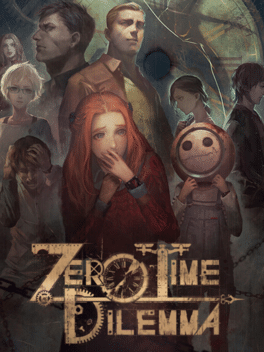
Zero Escape: Zero Time Dilemma
I really dug 999, and enjoyed the rollercoaster ride that was Virtue’s Last Reward. Both those games managed to take a heady (but anime-friendly) plot-line, and sprinkle it with clashing stereotypes who, by-and-large, managed to endear themselves to the player.
Zero Time Dilemma, however, presents nine utterly unlikable characters during it’s (very) cold opening, and few of them make positive emotional inroads throughout the remainder of the game. Puzzles very much stick to the Nonary Games formula, with no real surprises.
The last five-ish hours of the game are much more rewarding than the previous twenty, as the decision tree complicates itself through time, but I wrapped up Zero Time Dilemma feeling thankful that I’d never have to deal with these characters again. A definite low-point for the series.
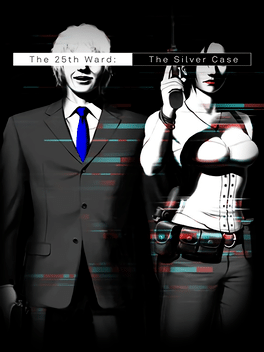
The 25th Ward: The Silver Case
A follow-up to Suda 51’s earlier Silver Case visual novel, The 25th Ward uses much of the same setting (and even some of the same characters) as the prequel. There’s now an additional plot strand (on top of the original’s two), providing a welcome opportunity to flesh out the narrative with an additional viewpoint.
And that’s really handy, because the narrative is some solid Suda nonsense (even if he was only responsible for about a third of the text). It’s glorious nonsense, of course: superhumanly powerful sexy female cop who moonlights in chat sessions? the return of a supernatural person/spirit who can subsume the living at will? a bureaucratic hierarchy of increasingly murderous assassins keeping the titular Ward in check? They’re all in there.
Despite the wackiness, there’s a little less cohesion in The 25th Ward than The Silver Case – whilst the run towards the finish line is pretty tight, the rest of the text is not quite as satisfying in the moment. The kicker, though, is having to trudge through the one hundred ending sequences to get to the “true” end; sometimes Suda’s jokes can wear a bit thin. Still, that’s probably more my fault than his.

Lugaru HD
Look, I never would have bought Lugaru from any storefront; but, way back in 2010, the idea of the Humble Indie Bundle (the very first Humble Bundle!) seemed too good for this altruist to pass by. I had to support it, resulting in the unwelcome inclusion of this game (and Gish, and Penumbra) on The List.
Settling in to play this third-person rabbit beat-em-up nowadays is pretty rough – for all the “HD” that its title may suggest, there’s very little visually pleasing, and aurally there’s only a few short synth loops to accompany the screeches of rabbits and occasional clank of weapons. And whilst the combat initially feels mashy at best, the context-sensitive nature of the controls – especially the counter – proves to be interesting.
Look, I’m not saying that this is a must-play: the narrative is short and clumsy, and the combat challenges feel uneven and careless. But there’s a bit more to Lugaru HD than I was expecting… but not much more. And my expectations were pretty low.
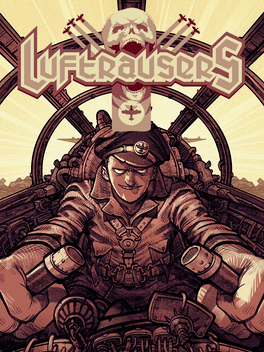
Luftrausers
With a very restricted colour palette, and wonderfully chunky – yet identifiable – pixelated enemy designs, Luftrausers is immediately engaging. The well-weighted unlock system, tied into micro-missions associated with each unlocked part, really propelled me along.
The real highlight of the game for me, though, was the mix-and-match assembly of the player’s craft. Selecting different weapon, body, and engine parts give wildly different crafts, both visually and ludically (and even aurally, with the background music changing on the basis of the weapon parts).
And, lets face it: the surprise ending of the game is pretty awesome.
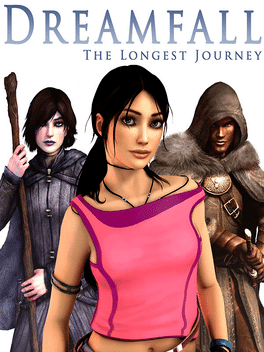
Dreamfall: The Longest Journey
As with Dreamfall‘s predecessor (The Longest Journey, Com-PETE-d in 2022), I started with the best of intentions… but was soon frustrated into opening a text walkthrough, which accompanied the rest of my play.
As an early 3D point-and-click adventure, it’s… well, it’s trying (in both senses – and tenses – of the word). None of the puzzles are too onerous – though there’s some annoying back-and-forth puzzles that span multiple locations in the mid-game – but there’s just enough friction to annoy. The infrequent combat and chase sequences, on the other hand, are irritating from the get-go… and the (small) level design really reminded me of another game of the era, Deus Ex: Invisible War.
Look – I’d be lying if I said that I wasn’t compelled by the story, especially in the back half of the game. But even with the post-credits teaser, and numerous dangling threads, there isn’t enough intrigue to tempt me into playing through the final game(s) in The Longest Journey series… but I may watch a walkthrough.
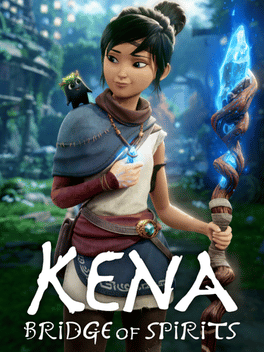
Kena: Bridge of Spirits
There’s no denying that Kena is a gorgeous looking game – especially on the PS5, where the animation-studio-quality graphics run at a smooth 60 fps. The visual design is matched by the audio design, with clear indicators of your status during battle.
And that’s just as well, because Kena‘s combat is no joke. For all the cute characters and well-realised scenery, the boss fights (and even regular encounters, on harder difficulties) are challenging. What initially seemed like it might be an old-fashioned character action explore-a-thon reveals itself to be sterner stuff.
But it’s super-rewarding, even if some of the Challenges made available in New Game + frequently veer into frustration. Luckily, NG+ also makes a series of modifiers available, one of which marginalises the combat to make the game a much more comfortable experience.
Com-PETE-ion required 100% collection – all Charmstones, all Hats, hence all Challenges. But I drew the line at Master Mode – I used a save game glitch to unlock the Master Mode trophies, and even the few short battles to get to the glitch were almost beyond me. Played on both PS4 and PS5.

Bridge Constructor Portal
I totally get why games like Bridge Constructor are fun for me: they exercise the (few remaining) engineering bits of my brain, with solutions releasing all sorts of satisfying academic endorphins.
The problem is that the first such game I played – World of Goo – pretty much nailed the formula. It had a built-in resource restriction (that obviated the need for high-score chasing), and… well, it was just adorable.
Bridge Constructor Portal isn’t adorable, but the physics model is still satisfying. The differentiating aspect of this game, then, is the inclusion of the Portal mechanics… and it’s true that the more Portal-focussed levels in the Portal Proficiency DLC provide the real highlights for the game. But whilst there’s still the usual glee to be found as you route a convoy of forklifts through a collapsing construction, many of the levels feel coarse.
The clean Portal visual aesthetic is pleasing, but the narrative elements – delivered by both GLaDOS and unspecified Aperture Labs supervisors – are crude: the idea is there, the phrasing feels familiar to those characters, but it just doesn’t work.
In all, Bridge Constructor Portal made me wonder why I’d bought it in the first place. It felt like a kind of broadly-competent game that only pads out my backlog with completionist pressure, not ludic joy. That’s something I want to try and prevent in the future.
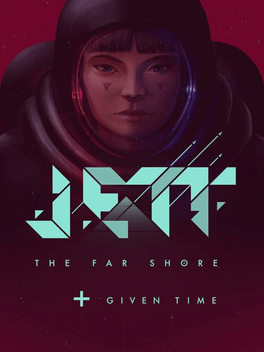
JETT: The Far Shore + Given Time
The vibe of Superbrothers: Sword & Sworcery EP totally sold the Superbrothers brand to me, but the initial media response caused me to hang back a bit on JETT. An accidental YouTube video bumped it back into the foreground… though I waited for the release of the Given Time expansion before immersing myself in its world.
And what a world it is – minimalist, refined, and oh-so-convincing, it is a wonder to explore. The heavy mystical overtones lend great weight to the story, and whilst the player’s craft is certainly a handful to control, the satisfaction found in nailing a manoeuvre is joyous.
JETT: The Far Shore provides a stunningly realised world, full of loneliness and confusion and action and camaraderie; Given Time wraps a bow on it, sealing the deal. A sublime package.
(Com-PETE-d on both PS4 and PS5.)
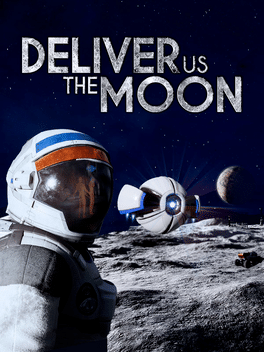
Deliver Us The Moon
With such a strong narrative and sense of place, it would be easy to categorise Deliver Us The Moon as a walking sim (as much as I hate the derogatory use of that term). But there’s still some (albeit slight) puzzles to be found, and more than a hint of horror in the loneliness of lunar wanderings.
The lunar base in which the player spends much of their time feels really well realised; but the character machinations, mostly seen through flashback holographic recordings, feel pretty one-dimensional.
At the end of the day, Deliver Us The Moon presents a tangible world with just enough gameplay to be engaging. There are a few snippets of its short length that could be labelled obtuse (or, less charitably, “rough edges”), but it still provides an enjoyable romp through a bleakly dystopian near-future.
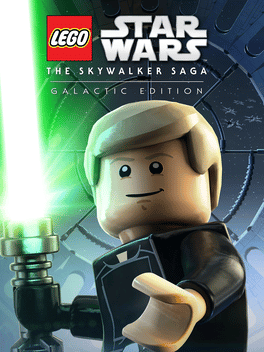
Lego Star Wars: The Skywalker Saga Galactic Edition
When I played the first Lego Star Wars on the Xbox in 2005, it felt fresh and cheeky and fun; when I played the sequel the following year, I still had fun, but a little voice in the back of my head grumbled: “Haven’t we seen this before?”
So I stayed away from subsequent LSW releases until Games With Gold had The Complete Saga back in 2017 (a decade after its initial release), so I snaffled that and discovered that Yes, I had seen it all before. Still fun, though.
But The Skywalker Saga got a fair bit of positive buzz in the media upon its release, so I took advantage of a lazy 50%-off sale and picked it up, hoping to see something new.
And there were new discoveries to be had: polish galore, a reasonable attempt at character voicing, and a Lego-comedy presentation of Episode 9 (which I’ve still not seen). But at its core, the Lego gameplay remains unchanged… and there is So Damn Much Of It.
My Xbox says I spent nearly 125 hours doing everything I could within the world of The Skywalker Saga: collectibles, side-quests, unlocks a-plenty. And I would’ve been perfectly happy if there’d been one-fifth of that content. There truly is Too Much Of A Good Thing.

Pupperazzi
Taking photos of gloriously gormless dogs in a lo-fi world? Yes please.
There may only be a handful of locations, but they – and the photo quests requested of you – are chock-full of humour. The fact that the first-person player character is a camera with foolishly long legs is icing on the cake.
Pupperazzi is just about perfect as a cozy palate-cleanser for me. It’s not too long, there’s plenty of questing, and hundreds of stupid, faithful dogs. Silly and fun.
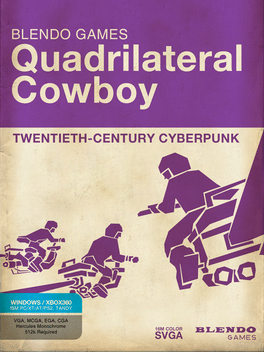
Quadrilateral Cowboy
I got sucked into Brendan Chung’s world of Blendo Games through the cinematic wonder of Gravity Bone and Thirty Flights of Loving; sure, there was some unappealing stuff in the Blendo compendium that I subsequently bought, but nothing that could discourage me from buying Quadrilateral Cowboy when it dropped.
Cowboy should totally be my cup-of-tea: chunky Gravity Bone-ish character models, and a svelte-but-satisfying coding paradigm underpinning the futurist heist scenarios that the game throws at you. It’s interesting writing, to be sure, but some of the puzzles rubbed me the wrong way.
I don’t have anything bad to say about Quadrilateral Cowboy, because I think the problem was my grey matter; as a retro-futuristic cyberpunk-ish engineering puzzler, it does what it says on the tin. I’m just a little sad that it didn’t hit me as hard as I hoped it would.
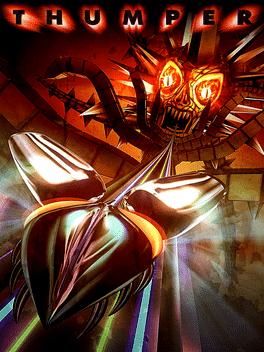
Thumper
Prior to the release of Super Mario Odyssey, there was a real dry spell on the Switch. Sure, I caned Breath of the Wild, but when I wanted a change from that there seemed to be precious little of interest to me. There was a bit of online chatter about Thumper – casting it as a metal-based rhythm game with a brutal vibe – and, despite the fact that I’m notoriously shit at rhythm games, I was so desperate for something new to play on the Switch, and…
First impressions were good – fantastic music, simple mechanics – but the brutal difficulty caused a bit of consternation. And also heart palpitations. Trying to play this game just before bed left me amped for hours. Most of all, however, was the fact that Thumper felt relentlessly oppressive – and it genuinely scared me.
Scared me enough to not want to push deep into the second level. I am, after all, a massive scaredy-cat.
But then came the internet rumblings that Thumper was incredible in VR. Intriguing! Not intriguing enough that I wanted to stain my PSN profile with it, but my PC could drive my Quest… and that proved to be a revelatory experience. The fear and oppression were still there – heightened by the envelopment of VR – but it felt like an addressable challenge. But the obvious lag when using Virtual Desktop (to drive the Quest) forced me back to the desktop… but this time I was driven.
Gradually, I crept through Thumper‘s Levels. A maelstrom of mechanics, each a glorious opportunity to learn, mixed with sweat-inducing levels which mixed the need for memorisation and sweat-filled, seat-of-my-pants interpretations of the tracks rushing towards me. The final sub-level – the game’s denouement – is stunning, forcing you to unlearn all that has been learned, bending your ear to hear new notes amongst the discordant, time-mangled notes.
Stunning.
Then came S-Ranks. Then came a return to the Switch, playing in handheld mode to obviate the family TV’s lag. And then – buoyed by my fleeting experience with VR – I bought the PS4 version and hammered PSVR. And then came the PS5 version. And a spreadsheet tracking level scores (and S-Ranks) across all four versions that I now owned.
I loved Thumper. One of the best gaming experiences I’ve ever had.
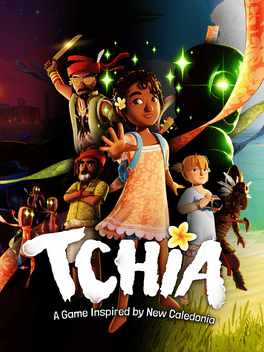
Tchia
In a year that featured a full-blown Zelda, was there room for another (joyously twee) Zelda-like?
Absolutely. Tchia was a delight to play – engagingly loose movement mechanics provide a wonderful freedom in exploration, aesthetics are solid, and the narrative provides a heartfelt innocence and beauty.
Tchia is acutely aware of what it is, providing ample player support, and it never outstays its welcome. Played through twice – PS4 and PS5 – and enjoyed every minute.
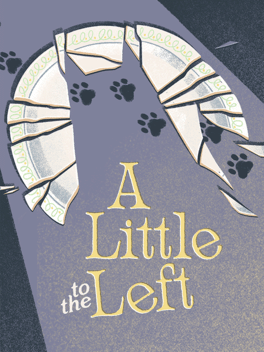
A Little to the Left
I totally fell for A Little to the Left when I first saw mention of it on a Nintendo Direct.
Then I discovered that there’s a massive difference between resolving someone else’s OCD, and resolving your own.
Thus, A Little to the Left did not work for me: I pushed through the levels, achieved my Achievements, and never looked back.
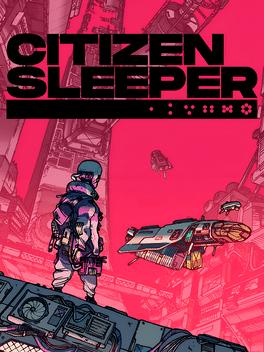
Citizen Sleeper
I’d heard about Citizen Sleeper – and the strength of its narrative – on a couple of podcasts, so I dropped it on my Steam Wishlist… and it magically appeared in my Library last Christmas.
It turns out that the narrative plaudits were completely warranted: Citizen Sleeper paints a rich sci-fi story with oodles of humanity, accentuating the visual novel-ish aspects of its gameplay with overt dice-roll randomness. It works really effectively, with well-realised characters driving the (taut/comical/desperate) plot(s) along… and some of the narrative threads are quite tricky to get into, and rewarding to explore.
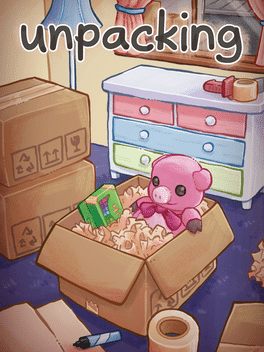
Unpacking
Yet another purchase inspired by an appearance on a Nintendo Direct; yet another “cozy” game that wanted to coddle my thrashing gamer brain.
The detail in the pixel-ified graphics is incredible – I could almost figure out all the games in the protagonist(?)’s collection, and the lifestyles that the rooms hinted at were immediately identifiable.
But the game itself – as the title suggests, it’s little more than the removal of items from moving boxes & placing them in their new homes – is interesting only because of the aforementioned graphical detail. It’s an interactive pictorial narrative with a handful of scenes that, despite its short length, didn’t do much to soothe me.
Maybe I just don’t get “cozy” games.

Tunic
Sure, I’d Com-PETE-d Tunic twice before (on PC & Xbox), but it was on sale on PSN, so I played through both the PS4 and PS5 versions, too.
I still love Tunic.
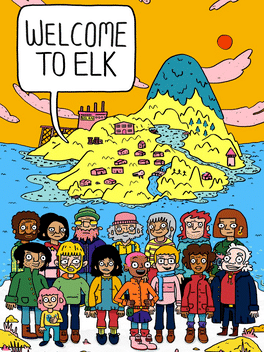
Welcome to Elk
A quirky graphical adventure, Welcome to Elk owes much to Northern Exposure and Twin Peaks for its focus on an ensemble cast, with each wrinkled story adding to the overall texture of the tiny Nordic fishing village.
There’s no real impediments in the way of puzzles or combat (the few minigames are simplistic and short), so Welcome to Elk comes across as an interactive novel. And that’s just fine by me – it’s a short and satisfying read.
The highlights for me, however, were the occasional video segments featuring the people who provided the inspiration for the characters’ stories – those snippets were beautifully warm and human and gorgeous.
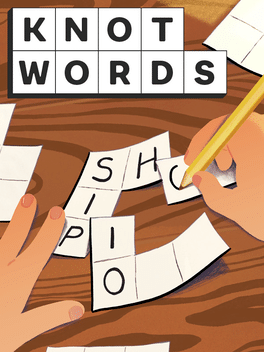
Knotwords
After kicking a pandemic Wordle habit, I picked up Knotwords as a replacement. Of course, I then discovered a “maintain a 365 day streak” Achievement, so another habit necessarily formed.
Luckily, Knotwords was a word-grid game that tickled my brain in the right ways. Well, the Monday-to-Friday games did, anyway; the weekend puzzles were often right on the edge of my ability, and some required some solid brute-forcing. But with each cell containing a list of valid letters, that was never a massive problem, allowing me to just grind out the results I needed to win. Even now, I still occasionally fire it up for a satisfying bit of word-tinkering.
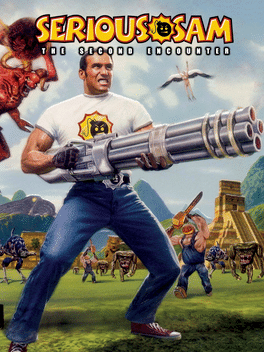
Serious Sam Classic: The Second Encounter
As previously mentioned: I inadvertently acquired a stack of Serious Sam games as a result of an ill-advised Humble Bundle purchase. I’d rather not have a stack of Serious Sam games.
At least The Second Encounter seemed a little more polished than its predecessor; I’m not looking forward to the HD editions and their (apparently) buggy and (definitely) tricky achievements.
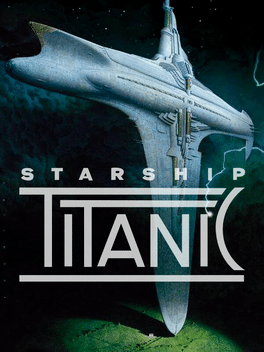
Starship Titanic
I’m been a massive Douglas Adams fan since the mid-eighties, so Starship Titanic was acquired pretty much as soon as I had the means to play it. Or so I thought – I was strictly a Windows NT kinda geek, and Titanic most certainly was not. I did spend ages building appropriate VMs to try and support a Windows 95 OS, but on the few occasions that I got something vaguely stable I was disappointed to find that the character’s lip-flaps were offensively out-of-sync. I figured that my VMs were to blame, and reluctantly decided to wait for a more official re-release.
Eventually, there was a supported version on GOG and Steam… and it turns out that my VMs weren’t to blame, and the lip-flaps were really that bad. So I read through all the support documents in my original big-box release, read the Terry Jones novella, and went to work on the game.
And… it doesn’t really hold up. It’s obtuse, arcane, persnickety, and just plain tricky, and the humour that Adams baked into the characters and their environments fails to make it worth one’s while. I actually gleaned far more enjoyment from all the support materials than the game, though it was a delight to hear John Cleese’s contributions to the character voices.
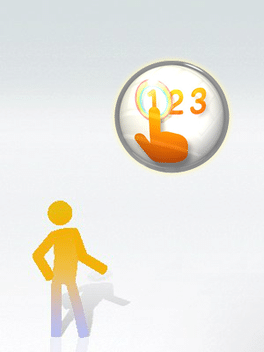
Welcome Park
One day I was tinkering around on the Playstation Store and I discovered that I “owned” (as much as one can) a bunch of titles that I wasn’t aware of – cross-platform releases, freebies, and the like. Of course, my brain insists that I have (inadvertently) “committed” to them in some way… and thus, another dozen titles appeared on The list in one fell swoop.
One such “surprise” was the pack-in title for Playstation Vita owners, Welcome Park. A mere handful of mini-games designed to show-off the Vita’s hardware features, Welcome Park didn’t trouble The List for long. Some easy (and two slightly trickier) trophies were obtained with little time investment, but it was barely worth the effort.
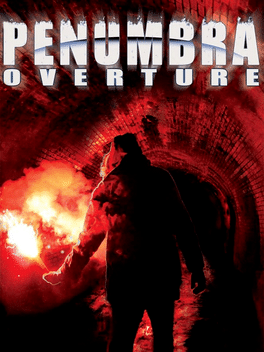
Penumbra: Overture
Yes, I’m a scaredy-cat. Yes, I played this with two video (and additional text) walkthroughs by my side. No, I did not have an enjoyable time.
But I can totally see why this works for some people. The cruft associated with a decade-old game worked in its favour, too, with blurry textures (by modern standards) adding a musty vibe to claustrophobic, poorly lit explorations that have an overwhelming sense of danger.
Not for me.
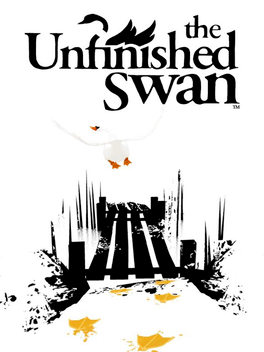
The Unfinished Swan
I blasted through The Unfinished Swan on the PS3 when it was first released, and had a great time with it; returning to the game years later (courtesy of some Playstation cross-platform freebies) proved that the game is still worthy of engagement.
On the PS4, anyway – the Vita version feels a little too fiddly to be really “fun”.
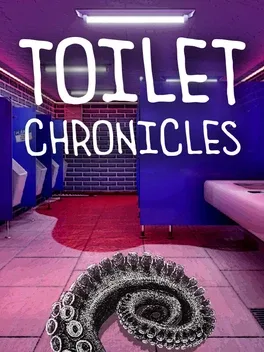
Toilet Chronicles
A short, quirky, adventure-ish sort of game with quirky puzzle solutions, Toilet Chronicles subverts expectations with its tongue firmly planted in its cheek. The minor overtones of horror didn’t scare me off (!), and some of the voice acting is brilliant.
Again – it is short, maybe only requiring a pair of hours to investigate all its quirks… but that means it doesn’t outstay its welcome. A great comedic short.

flOw
Of all the PS3 games that I discovered had cross-platform “purchases”, flOw was the one that felt most at home on the Vita… in fact, I’d almost say that I preferred it on the Sony handheld.
The screen is perfect for flOw‘s watery visuals, and the handheld form works wonderfully with the tilt-based gameplay. The DualShock 4, in comparison, feels a little twitchy and over-enthusiastic, but that doesn’t really detract from the quality of the game – yes, it’s a slight in content, but it’s still a fun diversion.
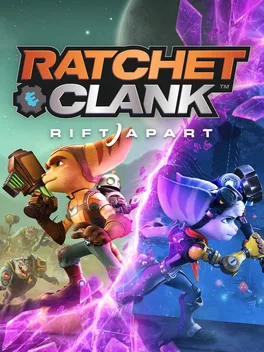
Ratchet & Clank: Rift Apart
I didn’t mind the PS4 remaster of the original Ratchet & Clank when I played it a few years back, and there was a fair bit of frothing over the technical showmanship of this PS5 launch game, so I was reasonably confident of a Good Time when I bought this.
But I wasn’t wowed. I’m sure the engineering involved in the game’s fast transitions was phenomenal, but the game behind it felt like it was still in the original game’s shadow. I guess that the lack of Deep Knowledge of the series didn’t allow me to be see the finer points of Rift Apart‘s evolution, but I don’t feel compelled to learn more by spending more time with this franchise.
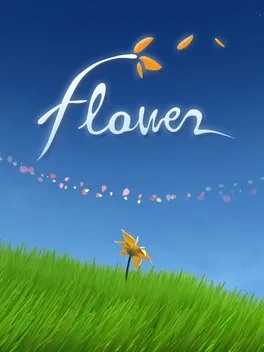
Flower
Another pair of PS3-cross-platform-purchase discoveries! I had a bit of a conflicted time with Flower when I played it on the PS3 in 2012, but I was keen to give it another go… and, if anything, the Vita version actually sullied my impressions of the game. Swishing the Vita around in the air, hoping for favourable motion control responses, felt bad!
The PS4 version – or rather, the DualShock 4 control tuning – felt better, but not so much that I would recommend playing it nowadays.
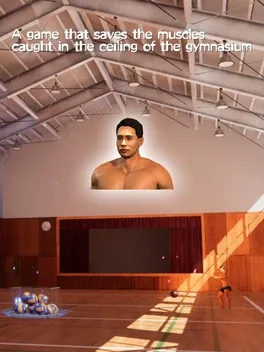
A game that saves the muscles caught in the ceiling of the gymnasium
So… this clearly started life as an Unreal demo. But there’s something oddly compelling – for an hour or two, anyway – about throwing volleyballs at statically posed musclemen that are trapped in the rafters of a gymnasium.
There’s not much more to the game than that, but it’s so cheap that the value-for-money quotient is still pretty reasonable. Quirky.
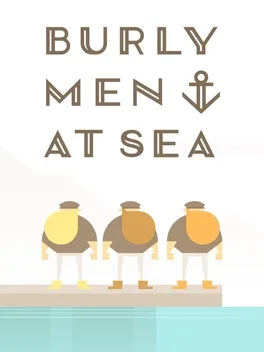
Burly Men At Sea
A surprise cross-purchase for the Vita, this cute Choose-Your-Own-Adventure VN variant is completely at home on the handheld. It looks absolutely gorgeous on my Vita’s OLED, and it was a pleasure to play through this again.
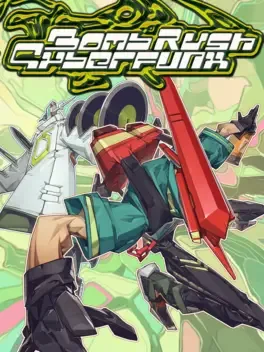
Bomb Rush Cyberfunk
Look – Jet Set Radio Future is one of my all-time faves. Not the original JSR – too raw and clunky for me – but the fast, smooth, and aurally divine Xbox-only sequel. So when Bomb Rush Cyberfunk was announced, explicitly referencing JSRF and proudly stating that Hideki Naganuma would be contributing music, I was committed.
There I was, mere moments after the game unlocked on Steam, and… wow, that opening chapter sure was a surprise! Featuring a weird, grim-but-silly tone, and sorely missing any kind of vocal accompaniment (akin to DJ Professor K’s over-the-top rants), it’s fair to say that I was initially disappointed.
The moment-to-moment gameplay of Bomb Rush Cyberfunk is indeed reminiscent of JSRF, but just lacks… something. And I think that “something” lies mainly in the audio – the lack of barks leads to the characters feeling very samey, different modes of transport notwithstanding. And whilst I largely enjoyed the forty-ish hours I played, the last dozen-or-so were a bit of a slog.
Overall, this is a marked improvement in the JSRF-like genre – much better than Hover! – but still left me disappointed, and wanting more. Thankfully, this game’s inspiration is still playable, and Naganuma’s early-2000s tunes are timeless.
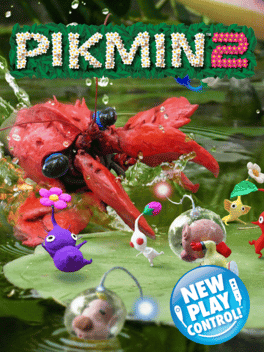
New Play Control! Pikmin 2
The Pikmin games tickle an odd part of my brain. I love the aesthetics, I adore the characters, and I can get lost in the gameplay for hours… but it takes a massive effort for me to actually sit down and play them. Like, I’d-rather-watch-paint-dry amounts of effort.
And yet, I still love them.
Pikmin 2 is more Pikmin, and it’s adorable. And this edition’s Wiimote-tuned controls work great. It’s a lovely game, with (as usual!) a bloody difficult back third – some of those pink flower challenges are rudely difficult.
I just wish I knew how to circumvent the mental brick wall I have in my head that surrounds the idea of more Pikmin.
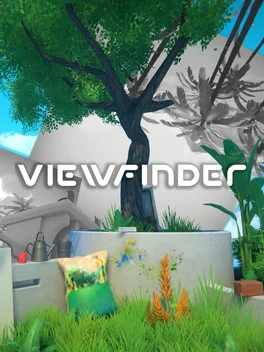
Viewfinder
For what is ostensibly a photo-taking game, Viewfinder makes an incredible first impression. The puzzles it presents – solvable only through your camera’s titular viewfinder – initially sit right in the sweet spot of being straightforward to solve, while being really satisfying to figure out.
Of course, the difficulty soon ramps up… but not obnoxiously so. There is a time-based trial towards the very end that does feel at odds with the rest of the game, but it’s not too bad.
Viewfinder still feels like it goes on too long… which is odd, since it’s actually quite brief. But the high points of the game are incredibly high, making this well worth checking out.
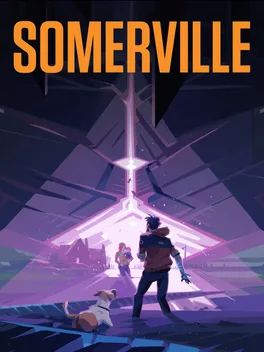
Somerville
For a while there, it seemed like every month presented a new game trailer that touted to be “from the makers of Limbo and Inside“. I can totally understand why – Playdead’s games are brilliantly realised, and a real feather in the cap of anyone involved.
So it was a real surprise when I fired up Somerville and discovered that it was a side-on 3D adventure game that felt… well, stodgy. Visuals are functional (but lack the consistent aesthetic of something like Limbo), and – aside from a handful of meaty alien effects – the aurals are sadly unremarkable. The gameplay veers between awkward action hijinks and finicky find-the-pixel adventuring, and the language puzzle that gatekeeps the various endings is somewhat obtuse.
If I were to describe Somerville in one word, it would be “Underwhelming”. Everything’s present and competently implemented, but nothing is compelling. And that’s a real surprise from one of the founding directors of Playdead; sure, there’s some interesting narrative bits, but absolutely everything in Somerville is ridiculously outshone by the games in its past.
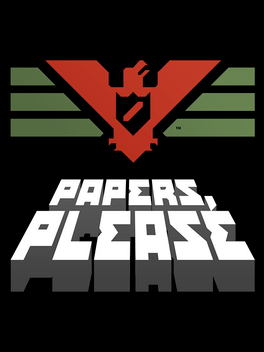
Papers, Please
So – the problem with my brain is that sometimes, inconsistently, it will insist on Doing Something I’d Rather Not before feeling comfortable doing Something I Really Want. This is relevant here because I Really Wanted to play Return of the Obra Dinn, but my brain was telling me that I had to push through Lukas Pope’s previous game first.
And what I’d heard about Papers, Please scared me. I’m not always the most observant, time pressures terrify me, and it sounded like the plethora of rules would confound me. But once I started playing, all those concerns dissipated: the grim atmosphere of the Eastern Europe-inspired Arstotzkan aesthetic was punctuated with sparkles of humour and humanity, and there was a tangible joy in chaotically flipping through the papers on my desk.
Sure, I resorted to a walkthrough in order to wrap up all the achievements, but I felt like I had a brilliant time with Papers, Please. The short movie inspired by the game was totally worth my time, too.
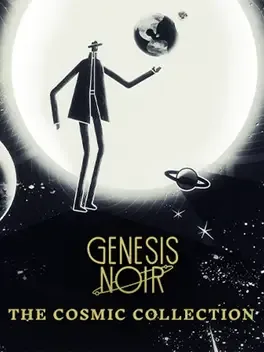
Genesis Noir: The Cosmic Collection
There’s no denying that Genesis Noir makes an incredible first impression: finely detailed (mostly-) monochromatic graphics are coupled with an edgey jazz soundtrack to really invoke a noir vibe. Thereafter come a series of lightweight puzzles as you explore a series of scenes, each having their own little neural twists and sensory peccadillos.
It is absolutely visually arresting, but I left this short game feeling… unsatisfied? The gameplay felt shallow, each scene feeling like a passing vignette, and yet I wouldn’t have wanted them to carry on any longer than they did. The aesthetic delivers, the gameplay did not.
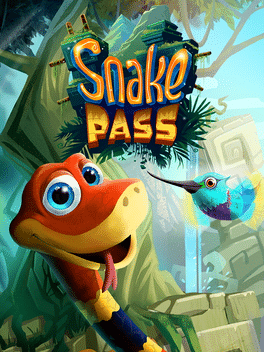
Snake Pass
Colourful, cartoony visuals and a couple of weird control mechanisms… the online vibes for Snake Pass were enough to draw me in.
And, for most of my time with the game, it was a joyful and satisfying experience. Each of the available control methods had its pros and cons… but that only became apparent when I started trying to no-fail each level. Therein lay the real challenge of the game – the penultimate level, in particular, was a brutal exercise.
For good measure, I went and beat the par times in time-attack mode… all-in-all, Snake Pass proved to be a really good time.
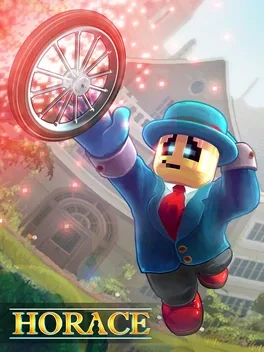
Horace
I think I was introduced to Horace via Ryckert’s Giant Bomb Quick Look; the deliciously British narrative married with creative chunky pixelated graphics made it an easy decision to pick it up. But it sat on the Steam backlog for awhile before I started it…
…but once I did start it, I was hooked. Whilst there’s pretty perfunctory platforming at its core, the game regularly introduces new power-ups and mechanics. There’s a wealth of exploration, a few mini-games, and a lot of narrative cut-scenes.
A lot of narrative. Somewhere around the fifteenth hour, it becomes too much narrative.
The cut-scenes are funny (playing off the titular Horace’s robotic lack-of-understanding about humanity), but there’s just so many of them! The game just goes on, and on, and on, and on, and on, and on, and on, and on, and on, and…
Value for money? Undoubtedly yes (especially since it’s regularly on sale). A fat-free, concise experience? Erm… no.

Hatoful Boyfriend
I found Hatoful Boyfriend on my Vita a few years ago, but I’ve no idea how it got there – PS Plus? optimistic sale? the mists of time cloud the reasoning. Regardless, I had a measure of fun plodding through its myriad endings on the Vita, the natural home of visual novels.
Discovering I also owned this on the PS4, I thought I’d give it every opportunity to win me over once more… but an hour was all I could take before auto-text-scrolling was turned on at maximum speed, with a guide by my side to speed through its trophies. Hatoful‘s twee oddballery did not work on me a second time.

Cocoon
Another game “from the makers of Limbo and Inside“… but this game is far, far better than either of those earlier titles.
Incredible simple to play – just one analog stick and one button required – Cocoon offers a wealth of clever & creative gameplay within its recursive worlds. The puzzles on offer manage to walk that fine line of being simple enough to solve, whilst absolutely dumping dopamine upon success.
Sure, I’ve played games that were more addictive – after all, Cocoon‘s seven hours took two sessions for me – but I’m struggling to think of any game that has been more rewarding.
File under “Perfect”.
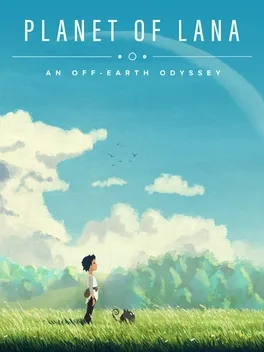
Planet of Lana
A side-scrolling cinematic adventure, harking back to Another World and Inside? It takes less than that to garner my interest, and luckily Planet of Lana is a fantastic little adventure.
The narrative is a great mix of folk and sc-fi, and brilliantly told. Audiovisuals are gorgeous, and the game is captivating… though short. There’s plenty of pixelly emotional heart-strings to be tugged, and some really taut stealth sequences that pitch their balance perfectly (for me).
I loved Planet of Lana. Can’t wait to see what comes next from that studio.

Humanity
Old-school puzzle design with brilliantly busy – but still readable – modern graphics
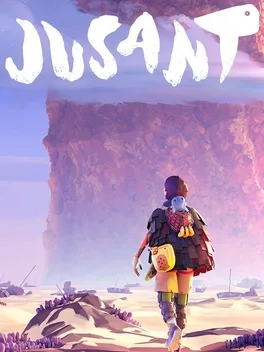
Jusant
Incredible scale and sense of place… but there’s something missing. Heart? Finesse on the presentation of the collectible notes?
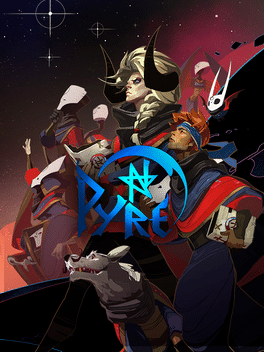
Pyre
I was getting pretty desperate to experience Hades… but there was an annoying voice in my head that was loudly insisting that I get through Supergiant’s back catalogue first. And with Bastion and Transistor both being bangers, there was no real reason to wait, was there?
Well… Pyre had received a bit of a “yeah, it’s good, buuuuut…” reception, mainly because it’s reminiscent of a side-on sports game. And whilst the game itself is solid – there’s a wealth of well-balanced team variety on offer – it’s the writing of Pyre that sets it apart.
For this sports game has an incredibly emotive narrative, with the player-character befriending their team-mates before committing most of them to a life in purgatory. It’s all done with a deft and humane touch, and the only reason that I didn’t go through and investigate every possible combination is because there’s (in theory) about 200 million of them. But I did hit all the major endings, and make sure everyone was saved at least once, and…
Yeah. I played a lot of Pyre. And I loved it.
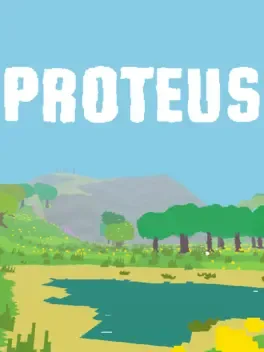
Proteus
Proteus is a wonderful experience. A walking simulator, for sure, but the sense of mystery and lack of distinctive visuals meld with a gorgeously evocative ambient soundscape to create a world worthy of exploration.
But I find it difficult to be drawn into that world on the Vita’s small screen. On the PS3, Proteus is great; on a handheld, it’s a bit more missable.
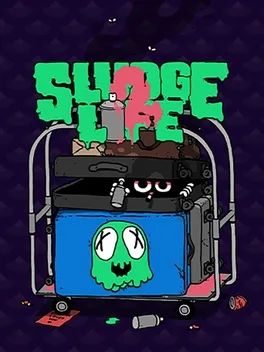
Sludge Life 2
I’ve made one (well, two) purchases on the Epic Games Store: Sludge Life (and its soundtrack). For some reason, the original game was unavailable on Steam in Australia, so off to EGS I went. And whilst the original game was enjoyable, it was hardly compelling.
But then Sludge Life 2 appeared on Steam, and suddenly it was in my library, so…
Well, it turns out that Sludge Life 2 is simply more Sludge Life… which is fine, I guess, but it loses any opportunity to impress with fresh ideas. The humour is still there, the tunes are still grimy, and the movement is still satisfying… but it all feels a little stale.
I wasn’t planning on playing a Sludge Life sequel… maybe I shouldn’t have bothered.
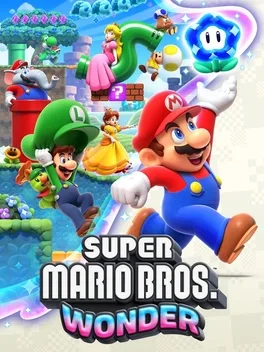
Super Mario Bros. Wonder
YAWN – except for mp. Or maybe because of it.
NSMBUD more engaging.
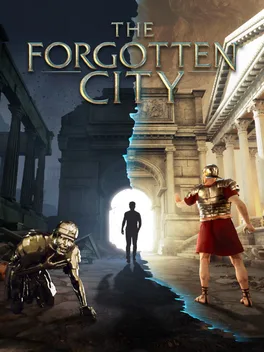
The Forgotten City
Great writing, great puzzling.

The Stanley Parable
Don’t play for five years? Alright.
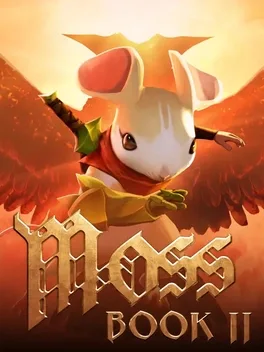
Moss: Book II
First game was a banger – second stands up, too
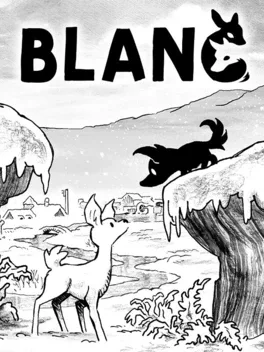
Blanc
My first bout of COVID ruined our Christmas, so I attempted to inject some joy into the day with a quick playthrough of a cute, hand-drawn, monochromatic co-op puzzler with my wonderfully understanding Significant Other.
And there is plenty of cuteness in the richly realised worlds. But some of the puzzles are obscured by those same monochromatic graphics, and one sequence in particular enraged me so much that my plans to extract something positive from a disrupted Christmas were pretty much scuppered. Even the usual rush associated with crossing something off The List didn’t pep me up.